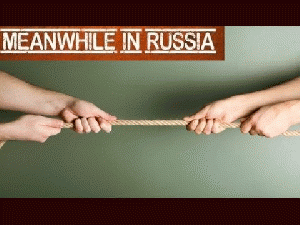Cross-posted from Dispatches From The Edge
British Field Marshall Bernard Montgomery had three laws of war:
One, never march on Moscow;Two, never get in a land war in Asia;
Three, never march on Moscow.
So why are the U.S., the European Union (EU), and NATO on the road to the Russian capital? And exactly what are they hoping to accomplish?
Like all battlefields on the Eastern front, this one is complicated.
For beginners, there are multiple armies marching eastward, and they are not exactly on the same page. In military parlance that is called divided command, and it generally ends in debacle. In addition, a lot of their weapons are of doubtful quality and might even end up backfiring. And lastly, like all great crises, there is a sticker price on this one that is liable to give even fire breathers pause.
There are actual armies involved. NATO has deployed troops, aircraft and naval forces in the region, and the Russians parked 40,000 troops on Ukraine's eastern border. But with the exception of the horrendous deaths of over 40 demonstrators in Odessa, the crisis has been a remarkably calm affair. The Russians took over the Crimea virtually without a shot, and while there is a worrisome increase of violent incidents in the south and east, they are hardly up to the French and German invasions in 1812 and 1941, respectively.
Which doesn't mean things couldn't turn dangerous, a reason why it is important to know the agendas of the players involved.
For the Russians this is about national interest and security, and the broken promises and missed opportunities when Germany was reunified in 1990. At the time, the Western powers promised they would not drive NATO eastward. Instead, they vacuumed up members of the old Soviet Warsaw Pact and recruited former Soviet republics into a military alliance that was specifically created to confront Russia.
(Note: You can view every article as one long page if you sign up as an Advocate Member, or higher).






